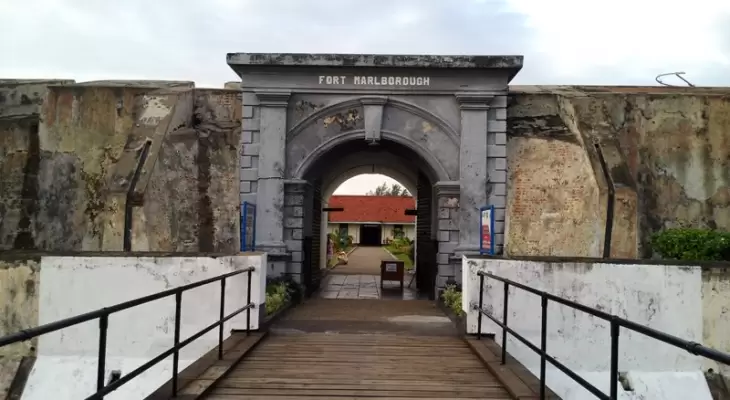British Heritage in Bengkulu

Holiday Ayo - Not only the Netherlands and Japan had colonized Indonesia, it turned out that the British had also colonized Indonesia for approximately five years, based on the Tuntang agreement due to the defeat of the Dutch from the British on the island of Java.
In addition, the Napoleonic wars in Europe also influenced the control of their colonies.
The Netherlands, which was colonized by Napoleon in Europe, was defeated by the British so that the colonies were automatically transferred.
However, specifically for Bengkulu, the British had already entered long before the Tuntang agreement. In 1695, three British trade envoys based in India arrived in Bengkulu to establish trade relations with the Bengkulu rulers at that time. Then the British built the fort of York around the mouth of the Serut River.
However, the fort did not last long due to the increasingly critical and fragile condition of the building. Therefore Joseph Collet as the commander of the fort wrote a letter to the leadership of the EIC in India, to build a new fort considering that the fort of York could no longer be repaired.
After being approved by the EIC leadership, Collet then built a new fort which was located not far from the fort of York. The fort was named fort Marlborough, in honor of a British army commander named John Churchill, who had won various battles in wars in Europe so that he was given the title Duke of Marlborough.
Fort Marlborough stands tall to this day and is a silent witness to the British colonial period in Indonesia, especially in Bengkulu. Bengkulu itself was then ceded to the Dutch as part of the exchange of territory under the London Treaty of 1824, which ceded Malacca and Singapore to the British, and in return the Dutch acquired Bengkulu. This fort was still used by the Dutch until the war of independence was over.
After the war of independence was over, this fort was used by the TNI until 1977 before finally becoming a museum managed by the Ministry of Education and Culture until now.
As a museum, its condition is well maintained and most of the buildings are still intact, although several times there have been wars with local residents and attacks from other countries, such as the Japanese who also occupied Bengkulu before Indonesia's independence.
The unique thing about this fort is that it is shaped like a turtle with its head as the main gate, and its legs as a corner of the fort that is used to monitor the surrounding area, from enemy threats coming from the sea and land. At the bottom of the fort, there is a prison room for imprisoning prisoners of war and rebels at that time. It is said that strange sounds can still be heard from behind the detention room, such as screams of pain as experienced by prisoners who are being tortured.
In addition, there are also soldiers' barracks and offices which are now used to store historical relics of the fort. In the middle, there is a large garden to accommodate the soldiers who are on standby to face enemy attacks. Here are stored some cannons that have been used by both British and Dutch soldiers during the colonial period in Bengkulu.
For history lovers who are visiting Bengkulu, it is mandatory to visit the Fort Marlborough museum, because a lot of information is still neatly stored in the museum gallery, apart from Bung Karno's house and his father-in-law's house during the period of exile.
Bengkulu is the only province that still has bitter memories of colonization by the British for 140 years, especially when it was led by Sir Stamford Raffles because he was the discoverer of the Rafflesia Arnoldi flower which only grows in Bengkulu.
The location is in the center of the old city, not far from the long beach so it is easy to reach either on foot or using public transportation.
Not far from the fort there is also a monument to Thomas Parr, a Bengkulu Resident who was killed in an incident with local residents in 1807.
His tomb is also located near the monument along with the graves of other British citizens who died in Bengkulu, mostly from malaria and dysentery in addition to war.








Leave a comment